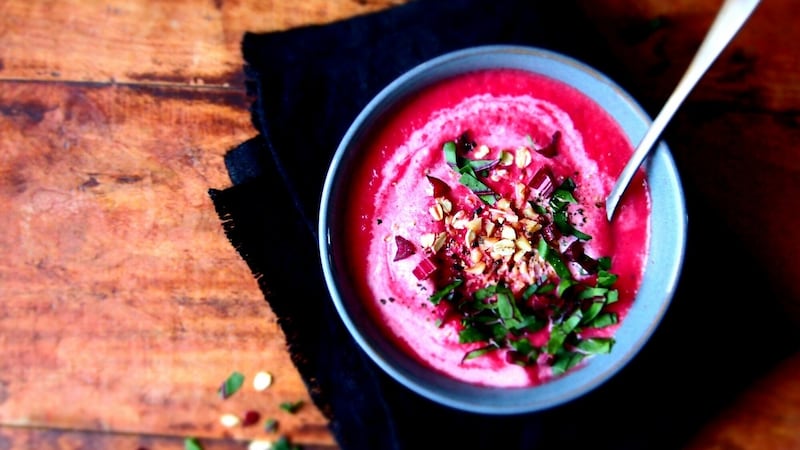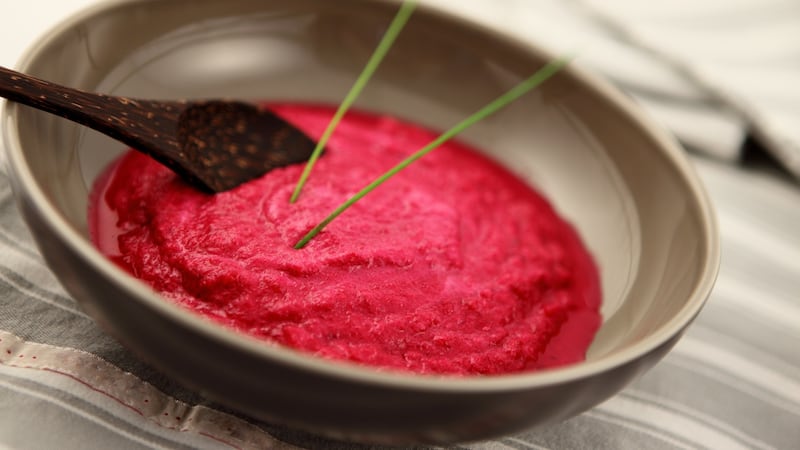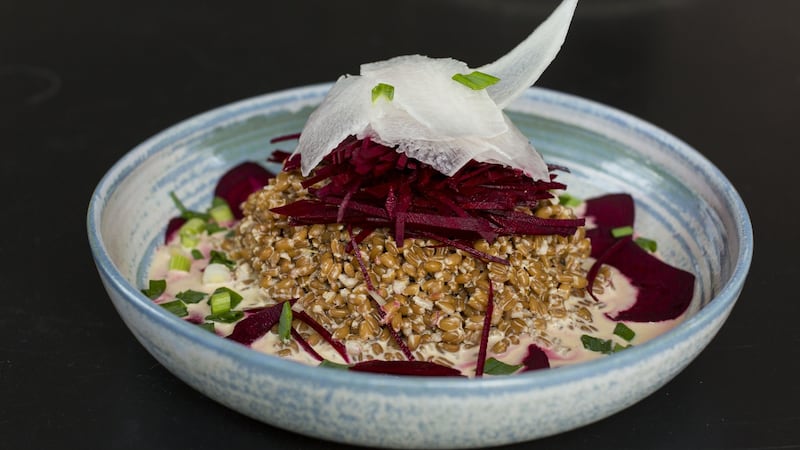Beetroot has had plenty of bad press over the years. What chance do you have when you are jarred and served up in cheap vinegar, you taint and discolour everything else on the plate, and your true sweetness doesn’t get a chance to shine through?
In the late 1970s, food writer Jane Grigson wrote about beetroot in her Vegetable Book: "We do not seem to have had much success with beetroot in this country. Perhaps this is partly the beetroot's fault. It is not an inspiring vegetable, unless you have a passion for highly coloured food."
Fast forward to today and we have beetroot available to us all year round, in many varieties and we’ve lots of new ideas on how to deal with them. They are simple to grow, thus making them rewarding for the gardener. The tops are also worth keeping and treating like spinach. Beetroot’s strong flavour balances perfectly with preserved fish, potatoes and horseradish making it the ideal winter vegetable, especially as the root stores well.
But to complement the winter varieties there are also many summer varieties in many different colours; not only red but yellow, white and even striped, known as candy beets. These little treats are well worth searching for or even planting in your own garden for the summer ahead. I find them to be a good introduction to non beet-lovers due to their mild flavour.
Beets are also wonderful raw and make a great salad dressed with a sharp orange, mint or horseradish dressing. However, they can be tough on our digestive system and contain oxalic acid (which can cause kidney stones if consumed in excess). Therefore, one must introduce them slowly and as part of a balanced diet. Their juice mixed with carrots has become a classic combination, with the carrot neutralising the acid content. As well as tasting good, they help to lower blood pressure, blood sugars and are a good source of iron and vitamin C.
Russian borscht

I often wonder why more restaurants don’t have this amazing stew-like soup on their menus. It’s comforting, cheap to make and can be adapted to suit the seasons. You can add different vegetables, spices and meats too – I add chilli when I’m looking for a lift. Very often, I make it without any dairy or flour and find the results perfectly pleasing.
Don’t be put off by the use of three saucepans, it’s not that daunting once you get started and will be well worth it. Putting my chef hat to one side, I must say that it’s much better made in advance even if the colour fades a little.
Ingredients
Serves 4
For the beetroot stock:
1 large beetroot, washed
3 tbsp cider vinegar
For the soup:
375g shin beef, cut into small pieces
2.5l water
Bouquet garni
500g beetroot
2tbsp cider vinegar
3tbsp tomato concentrate
2tbsp melted butter or oil
250g mix of carrots and onions
500g cabbage, shredded
3tbsp butter or oil
Bay leaf
1tbsp flour (optional)
Salt and pepper
To serve:
Beetroot stock
Soured cream (optional)
1 Begin by making the beetroot stock. Grate the beetroot over a saucepan so none of the juices are wasted. Pour enough boiling water over the beetroot to cover it. Add the vinegar. Bring slowly to the boil, then take it off the heat and leave it to infuse while you prepare the rest of the dish.
2 In another saucepan, put the beef in with the water and the bouquet garni. Bring to the boil, skim and simmer slowly, covered for 1½ hours.
3 Next, wash the beetroot and shred it into a third saucepan (no need to remove the peel unless it's coarse). Add in the cider vinegar, tomato concentrate and the melted butter, plus 250ml of liquid from the stewing beef. Cover and simmer for an hour.
4 Peel and shred the other root vegetables. Fry them in two tablespoons of the butter or oil, until they are slightly golden, then tip them into the saucepan with the shredded beetroot. Simmer for 15 minutes, then season with salt and pepper.
5 Meanwhile, strain the meat, keeping all the stock. Rinse the saucepan and return the stock to the pan, and bring it to the boil. Add the cabbage and after 10 minutes, stir in the beetroot and vegetable mixture. Add the bay leaf and more seasoning if needed. You might like to add some ground cumin or caraway here depending on your preference and the time of year.
6 Mash the flour with the last tablespoon of butter and use it to thicken the soup. Finally, drain the beetroot stock from your first pan and add it to the soup just before serving. The soup should be very hot, at boiling point, so that no further reheating is needed once the stock has been added. Further boiling will only ruin the bright colour but not the flavour. Serve with the sour cream on the side.
Beetroot puree

This simple puree is ideal to make in advance and keep in the fridge for putting on bread, crackers or part of a mezze plate. You need a food processor to get it nice and smooth and blend the flavours together.
Ingredients
Serves 4 as a starter or 12 as part of a mezze
4 medium beetroots
Olive oil
Salt and pepper
Zest and juice of an orange
Small bunch of fresh mint or small dollop of horseradish
Squeeze of lemon
1 Take each beetroot and lightly oil and place in an ovenproof saucepan with a tight-fitting lid and bake in a medium oven until soft through. This can take anything from 20 minutes to an hour depending on the time of year and the age of the beets.
2 Once the beets are soft through when pierced with a knife, remove from the oven and allow to cool.
3 When cooled, peel and roughly chop and place in a food processor along with a little olive oil, a good pinch of salt and pepper and the zest and juice of the orange (or mint or horseradish).
4 Blitz for a minute until it all looks smooth. Taste it and add more oil and or seasoning to get the balance right. This is where adding a squeeze of lemon will bring it all together by cutting the sweetness of the beets and orange.
5 Store in the fridge until needed, removing it 30 minutes before eating to come to room temperature.
Mustardy salad of marinated spelt with beetroot and orange

This is a lovely way to use spelt grains and the use of mustard and orange brings out the natural sweetness of the beetroots.
Ingredients
Serves 4
200g spelt grains
10tbsp olive oil
1 very large raw beetroot
3tbsp mixed chopped herbs, such as dill and mint
1 bunch salad leaves
For the dressing:
8 tbsp soured cream
4 tsp Dijon mustard
4 tsp balsamic vinegar
Zest and juice of an orange
1 Cook the spelt in salted water until nicely soft – this can take up to 40 minutes depending on the age of the grains. Drain and rinse in cool water.
2 In the meantime, make the dressing by whisking the soured cream, mustard, vinegar and orange juice together until smooth. Season to taste.
3 When the grains are cooked, place them in a bowl and season with some olive oil, salt, pepper and the herbs, tossing together until well coated.
4 Peel the beetroot and using a mandolin or vegetable peeler, slice the beetroot paper thin. Take a large serving dish and cover the surface completely with the beetroot.
5 Next, place the marinated spelt in the centre of the plate, and drizzle the dressing over it. Arrange the salad leaves on the top and scatter the whole dish with chopped herbs.










